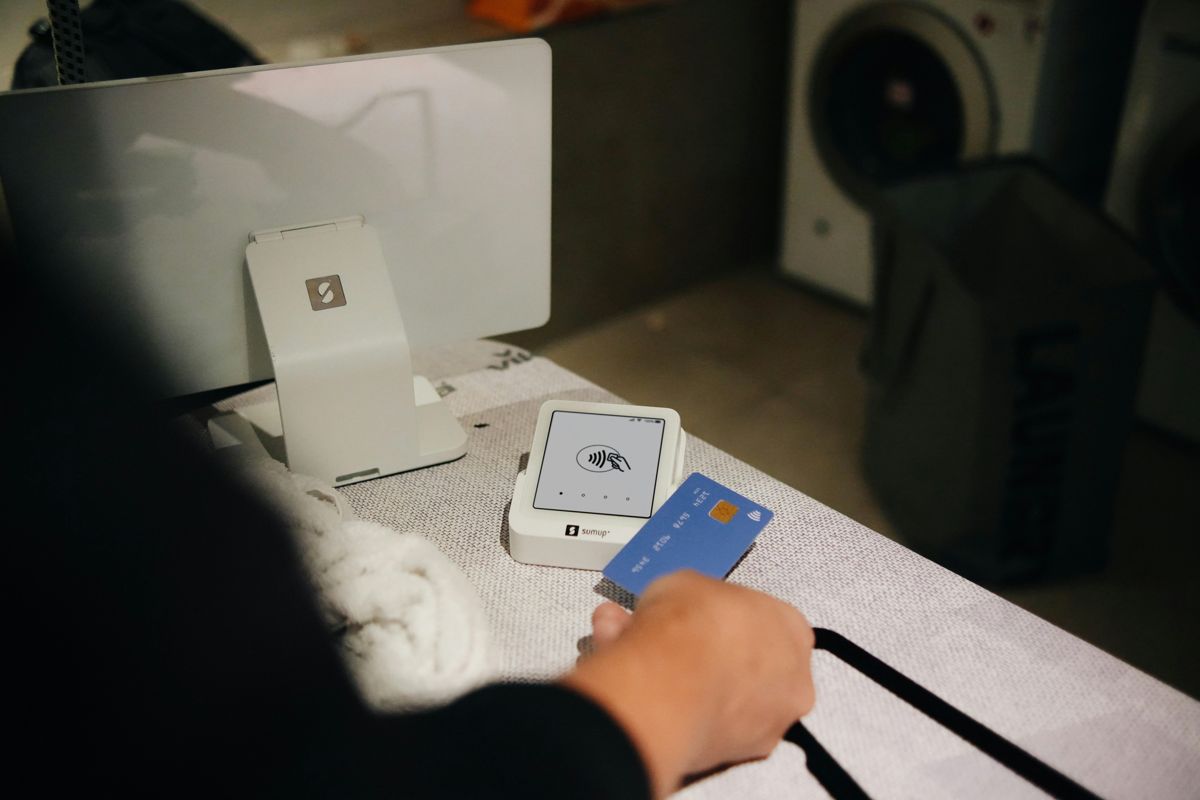The Ultimate Guide: Conducting Training

Table of Contents
Introduction: Understanding the Importance of Conducting New Employee Training
Welcome, professionals! In today’s ever-evolving business landscape, staying ahead means constant learning and upskilling. That’s where our guide on conducting ’tne’ training comes in - a comprehensive resource designed to empower you to lead impactful training sessions. This article will walk you through the essential steps for preparing, executing, and evaluating your own tne training sessions, ensuring they deliver maximum results.
But why focus on ’tne’ training? Well, as business leaders, we understand that investing in our team is investing in our success. By offering targeted, tailored training, we foster an environment of growth, innovation, and adaptability - all critical components for thriving in today’s competitive marketplace. So, let’s dive into the first step of conducting your own tne training sessions.
Welcome, professionals! In today's ever-evolving business landscape, staying ahead means constant learning and upskilling. That's where our guide on conducting 'tne' training comes in - a comprehensive resource designed to empower you to lead impactful training sessions.
Before we do that, though, it’s crucial to remember that every great journey begins with understanding why we embark on it. In this case, our objective is clear - to empower you with the skills and knowledge necessary to drive your team towards greater heights. So let’s get started!

Step 1: Define the Purpose and Objectives of Your tne Training Sessions
Ah, fellow marketing maestros! Before we dive into the nitty-gritty of conducting a training, let’s lay down a solid foundation. This step is all about defining the purpose and objectives of your training sessions. It’s like setting a GPS for your learning journey – you’ll know exactly where you’re headed, and how to get there.
First things first: What do you aim to achieve with these training sessions? Are you looking to upgrade your team’s skills, onboard new hires, or maybe introduce a revolutionary product strategy? Whatever the goal, make sure it’s crystal clear in your mind (and written down!). This purpose will guide every decision you make throughout the process.
Define the purpose and objectives of your training sessions to set the stage for success and keep everyone on track.
Next up: Breaking down those objectives into actionable steps. Ask yourself questions like: What specific skills do I want my team to master? How will these training sessions contribute to our overall business goals? Answering these questions will help create a roadmap for your learning journey, ensuring that every minute spent in the training is purposeful and productive.
Remember, defining the purpose and objectives of your training sessions sets the stage for success. It gives you direction, helps maintain focus, and keeps everyone on track – because we all know how easy it can be to get derailed when we’re juggling a million tasks at once! So take some time to think this through; the investment will pay off in spades as your training sessions unfold. Now, let’s move on to identifying your target audience for these training sessions – an essential step that should never be overlooked!
Step 2: Identifying Your Target Audience for the tne Training
Knowing who you’re training can make or break your tne sessions. It’s not just about delivering content; it’s about connecting with the people that matter. So, let’s dive into the nitty-gritty of identifying your target audience.
First things first, who exactly are we talking about here? Your audience could be anyone from fresh-faced interns to seasoned professionals, depending on what you’re trying to teach. Understanding their roles, responsibilities, and skill levels is crucial to tailoring your training effectively.

Now, let’s get specific. What industry does your audience belong to? Are they primarily working in tech, finance, healthcare, or something else entirely? Each sector has its own jargon, challenges, and expectations. By recognizing these nuances, you can ensure your tne sessions are both relevant and relatable.
Knowing who you're training can make or break your tne sessions. It's not just about delivering content; it's about connecting with the people that matter.
Lastly, consider their learning styles. Some folks might be visual learners who need diagrams and videos, while others might prefer interactive sessions or hands-on exercises. Understanding what makes your audience tick can help you design training that truly resonates with them.
In the end, it’s all about connecting on a personal level. When you know your audience inside out, you can create tne sessions that engage, inspire, and ultimately, drive real change. So, take your time to get to know your people, and the results will speak for themselves.
Step 3: Preparation of tne Training: Choosing the Right Format and Content
Friends in the marketing world, let’s dive into the nitty-gritty of preparing for your training sessions. Sure, you’ve defined the purpose, identified your audience, but the question remains: what format will best suit your content?

First off, consider the nature of your training and your learners. Are they visual learners, needing to see diagrams or videos, or do they prefer auditory learning through podcasts or webinars? A blend of formats can be a game-changer, keeping everyone engaged. Remember, the ultimate goal is to make knowledge accessible and digestible for all.
Consider the nature of your training and your learners, are they visual or auditory learners? A blend of formats can be a game-changer.
Once you’ve chosen your format(s), it’s time to tailor the content. Keep in mind that less is often more – provide only essential information and let your audience explore deeper if they wish. Use clear language and avoid jargon, ensuring your training remains inclusive and engaging. In this step, it’s crucial to strike a balance between theory and practical examples, making sure your sessions are as interactive as possible.
Lastly, don’t forget to pepper in some fun! A little humor can go a long way in keeping learners interested and motivated. Engage their senses with interesting stories or anecdotes related to the subject matter. When you do this right, conducting a training becomes less of a chore and more of an exciting adventure for both you and your audience.
Step 4: Creating an Engaging and Interactive Learning Environment
Let’s talk about the heart of your training sessions - creating an environment that sparks curiosity and fosters active participation. After all, ain’t no one learnin’ in a classroom where the air is flat as a pancake!

People don't just want to listen; they yearn for interaction. Mix up your delivery methods to keep things fresh and interesting.
First off, it’s essential to understand that people don’t just want to listen; they yearn for interaction. Mix up your delivery methods to keep things fresh and interesting. Remember, variety is the spice of life, my friend! Dive into group discussions, role-plays, case studies, and interactive quizzes. These tactics not only make learning more enjoyable but also help solidify concepts in learners’ minds.
Now, let’s talk about making your training sessions a two-way street. Encourage questions and feedback throughout the process. By doing so, you create opportunities for valuable dialogue that can deepen understanding and address any misconceptions promptly. Plus, it shows your audience that you genuinely care about their learning experience, fostering a stronger connection between you and them. So, don’t be shy; embrace those questions with open arms!
Step 5: Designing Effective Training Materials
Before we delve into the nitty-gritty of conducting a tne training session, let’s pause for a moment and discuss an essential ingredient – designing effective training materials. Just as a chef wouldn’t use stale ingredients in a dish, we can’t expect our trainees to thrive on subpar resources.
Designing effective training materials is more than just compiling a list of slides or a stack of handouts; it’s about creating a learning experience that captures the audience’s attention and encourages active engagement. Here are three key elements to consider when crafting your tne training materials:

- Relevance and Clarity: Make sure the content is directly related to the objectives you set in Step 1. Avoid using jargon or overly technical terms that might confuse trainees, especially if they’re new to the subject matter. Use real-world examples, case studies, or analogies to illustrate your points and make complex concepts more relatable.
Encourage active learning by incorporating interactive elements into your training materials.
Visual Appeal: Don’t underestimate the power of a well-designed visual. Infographics, diagrams, charts, and videos can help trainees grasp difficult concepts more easily than plain text alone. Keep in mind that our brains process visuals faster than text, so use them strategically to maximize understanding.
Interactive Elements: Encourage active learning by incorporating interactive elements into your training materials. This could be quizzes, polls, or even group activities. Remember, the goal is to keep the trainees engaged and stimulated throughout the session. By using these techniques, you’ll help ensure that the information sticks long after the tne training has concluded.
Step 6: Using tne Training: Best Practices for Delivery
Once you’ve meticulously planned and prepared your training sessions, it’s time to step into the spotlight and deliver. But how do you ensure that your delivery is as effective as your preparation? Fear not, fellow trainers! Here are some best practices to help you navigate this crucial step.
First and foremost, remember that engagement is key. Just like a captivating story can hold our attention for hours, an interactive training session keeps learners engaged and motivated. Incorporate a mix of teaching methods—from presentations and lectures to group activities and discussions. This not only keeps things interesting but also caters to different learning styles within your audience.

Next, don’t forget the power of visuals! Diagrams, infographics, and videos can simplify complex concepts, making them easier for learners to understand and remember. When it comes to presentations, keep your slides simple and uncluttered to maintain focus on your message. And remember, less is often more—avoid overloading your audience with too much information at once.
Delivering a successful training session boils down to keeping learners engaged, using visual aids effectively, and preparing meticulously.
Lastly, practice makes perfect. Familiarize yourself with the material thoroughly so that you can address questions and concerns confidently. Anticipate potential obstacles during delivery and have backup plans ready to ensure a smooth flow of information.
In essence, delivering a successful training session boils down to keeping learners engaged, using visual aids effectively, and preparing meticulously—just as a seasoned actor rehearses for their performance. With these best practices in mind, you’re well on your way to conducting training sessions that not only educate but also inspire!
Step 7: Handling Questions and Addressing Concerns During the tne Training
As your tne training sessions unfold, it’s essential to be prepared for questions and concerns from your participants. Engaging with them during these moments can make all the difference in their understanding and retention of the material. Here’s how to handle such situations gracefully while keeping the learning momentum going.
Firstly, encourage active participation by welcoming queries throughout the training. This not only shows that you value your audience’s input but also fosters an environment where everyone feels comfortable asking questions when needed. Remember, people learn best through interaction and dialogue.
Engaging with questions and concerns from your participants during tne training can make all the difference in their understanding and retention of the material.
When a question arises, make sure to address it promptly and clearly. Acknowledge the question, provide a concise answer, and offer additional insights if possible. If you don’t have an immediate solution, let them know that you’ll find the answer and get back to them shortly. Never hesitate to admit if you don’t know something; taking responsibility for your own learning demonstrates authenticity and builds trust with your audience.
Lastly, remember that concerns may arise during or after the training sessions. It’s crucial to address these promptly as well, as unresolved worries can distract participants from focusing on the training material. Reassure them that their concerns are valid and offer appropriate solutions or resources for addressing them. Encourage open communication and empathize with their feelings to foster a positive learning environment that promotes growth and progress.
Step 8: Evaluating the Success of Your tne Training Sessions
As a marketing professional, you understand that knowledge is power, but only if it sticks. So, how do you know if your tne training sessions are effective? Evaluation is key to ensuring your audience retains what they’ve learned and can apply it to real-world scenarios.
The first step in evaluating the success of your tne training sessions is to set clear, measurable objectives at the outset. This will provide you with a benchmark against which to gauge the effectiveness of your training. As you deliver the training, collect feedback from your audience through surveys, polls, or open discussions. This feedback can help you understand if the content was engaging and relevant to your audience’s needs.
Evaluation is key to ensuring your audience retains what they've learned and can apply it to real-world scenarios.
Secondly, analyze the data collected during the training sessions. Look for trends in attendance, participation rates, and overall engagement levels. You might also want to consider conducting follow-up assessments to measure the long-term impact of your tne training. This could involve tests or quizzes, or simply checking in with your audience to see how they’re applying what they learned.
Lastly, remember that evaluation is an ongoing process. Use the insights gained from each training session to continuously improve your approach. By focusing on evaluating the success of your tne training sessions, you can ensure that your audience walks away not only with new knowledge but also with the tools and confidence to use it effectively. After all, that’s what conducting a successful training is all about—empowering others to excel.
Step 9: Post-Training Follow-up and Support
Ah, the training is over. But wait! Your job isn’t done yet. The real magic happens after the final bell rings. That’s when the knowledge sinks in, and the transformation takes place. So, let’s delve into post-training follow-up and support - an essential step that can make or break your training sessions.
First off, don’t leave your participants hanging. Remember, learning doesn’t end when you do. Provide resources, tools, and references to help them reinforce their newfound skills back on the job. A simple follow-up email with handy tips and tricks could be just what they need to stay motivated and keep progressing.

Secondly, encourage peer support. Create a platform where participants can connect, share experiences, and help each other apply what they’ve learned in real-world scenarios. This will not only boost their confidence but also foster a sense of community that promotes continuous learning.
Lastly, don’t shy away from asking for feedback. It shows you value their thoughts and opinions, plus it gives you a chance to tweak your approach and make future training sessions even better. So go ahead, drop a survey or two - it’s all part of the process!
Remember, every bit of support counts in the post-training phase. By providing resources, fostering peer connections, and gathering feedback, you’re setting the stage for long-term success and continuous improvement in your training approach. It’s about more than just delivering a training session; it’s about making a lasting impact.
Common Challenges When Conducting tne Training and How to Overcome Them
Let’s face it, conducting a training isn’t always a walk in the park. From managing participant expectations to dealing with technology hiccups, there are numerous challenges that can arise during your sessions. But fret not! In this section, we’ll discuss some common pitfalls and offer practical solutions for overcoming them.
First off, let’s talk about managing participant engagement. It’s one thing to have a captive audience, but another to keep them engaged throughout the training. To tackle this issue, consider breaking up your content into smaller, digestible chunks, interspersed with interactive activities or discussions. This not only keeps learners interested, but also helps reinforce key concepts and encourages retention.

Now, let’s delve into another challenge: dealing with technical difficulties. There’s nothing more disheartening than a malfunctioning projector or a faulty internet connection during your training sessions. To minimize these issues, ensure you have a backup plan in place—whether it be an alternative presentation method or a reliable internet hotspot. Additionally, allocate extra time before the session to familiarize yourself with the technology and perform any necessary troubleshooting.
To tackle participant engagement issues, consider breaking up your content into smaller, digestible chunks, interspersed with interactive activities or discussions.
Lastly, let’s discuss handling questions and concerns from participants. It’s natural for learners to have queries during the training, but answering each one can eat into your precious time. One solution is to preemptively address common questions by including FAQ sections in your materials or dedicating a specific Q&A segment at the end of each session. If you find that certain topics consistently require more explanation, consider revising your content to better meet participant needs.
By acknowledging these challenges and implementing effective strategies to overcome them, you’ll be well on your way to conducting successful tne training sessions that leave learners feeling knowledgeable and inspired. Stay tuned for our next section where we’ll discuss best practices for delivering your training and creating a memorable learning experience!
Wrapping Up: Continuous Improvement in Your tne Training Approach
As we conclude our comprehensive guide on conducting a training, it’s essential to emphasize the significance of continuous improvement in your approach. The world of learning and development is ever-evolving, and being adaptable will set you apart from the rest.
Reflecting on the past training sessions is the first step towards continuous improvement. Analyze what worked well and what didn’t. Identify areas where you can make adjustments to enhance the overall effectiveness of your training sessions. Remember, even the smallest tweak can have a substantial impact on the learning experience of your audience.
Stay up-to-date with the latest trends and best practices in training delivery. Attend workshops, webinars, and conferences to broaden your horizons and gather insights from industry experts. Embrace feedback, both positive and negative, as it offers valuable insights into areas of improvement.
Continuous improvement is an ongoing process that requires dedication, adaptability, and a passion for learning. By consistently striving to refine your training approach, you'll not only create more engaging and effective sessions but also demonstrate your commitment to your profession and the success of your audience.
In conclusion, continuous improvement is an ongoing process that requires dedication, adaptability, and a passion for learning. By consistently striving to refine your training approach, you’ll not only create more engaging and effective sessions but also demonstrate your commitment to your profession and the success of your audience. Keep in mind that every training session is an opportunity to learn, grow, and make a positive impact on those who entrust their development to you.
Remember, conducting a training isn’t just about delivering content; it’s about inspiring change, fostering growth, and empowering others. Embrace the challenge, stay committed to continuous improvement, and watch as your training sessions transform lives for the better. Until next time, keep learning and keep growing!







